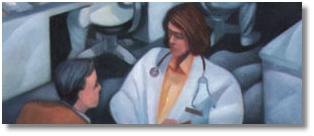
Fam Pract Manag. 1999;6(1):33

You know many of your patients by name. You are concerned about their total health and well-being. And you've earned their trust and respect.
But perhaps you've noticed recently that a number of your patients seem to want more. They want their phone calls returned immediately. They want information at their own convenience. They want better communication, they want individual attention and they want to know that you are striving to do things better. It's a tall order.
In part, these new demands are the byproduct of a competitive health care market and increasingly empowered consumers who have come to expect immediate information, 24 hours a day, seven days a week. As a physician, you have two choices in how you respond: You can ignore your patients' desires (see “Why I Fired My Family Doctor”), or you can find new ways of reaching out to patients and cultivating stronger relationships with them.
If you choose the latter, which we hope you do, this special section offers a variety of lessons. First, explore how you can use new technologies (e-mail and the World Wide Web) to communicate more efficiently with your patients. Next, learn why you should be conducting your own patient satisfaction survey and how you can go about it. Third, find tips for taming what is perhaps the biggest beast in your office: the telephone. And if that's not enough good information, consult our annotated bibliography of past articles, which covers everything from effective scheduling to dealing with difficult patients. You're sure to find an idea or two in the mix that will supercharge your relationship with your patients and boost their satisfaction — along with yours.